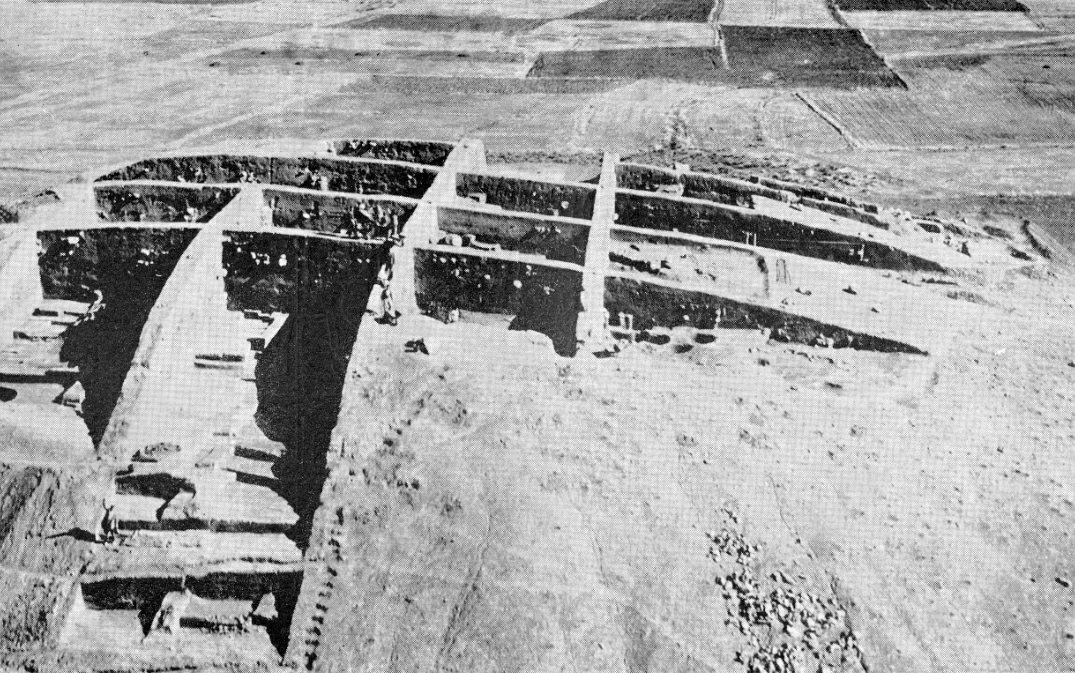Norsuntepe is located on the Upper Euphrates in the Keban region (current eastern Turkey), about 26 kilometers from Elazig. Archaeologists were able to find ancient settlement remains on the mound’s top, which had an area of around 500 meters to 300 meters.

Archaeologists from the German Archaeological Institute directed by Harald Hauptmann, a Heidelberg professor of Prehistory and Early History, excavated at Norsuntepe between 1968 and 1974. Because of the Keban Dam construction and its rising water levels, the fieldwork had to be completed by 1974.
These excavations revealed an extensive stratigraphy, detecting some 40 layers of settlements, from the late Chalcolithic (approx. 5000 years BC), going through all phases of the Bronze Age, to a Uartan settlement from the Iron Age (approx. 2000 BC).
The Chalcolithic, also called the Copper Age, is a period of prehistory located between the Neolithic (New Stone Age) and the Bronze Age. Copper began to be smelted in southern Anatolia (present-day Turkey) during the 6th millennium BC while the same Neolithic tools were still being used. The first evidence of copper smelting comes from Çatalhöyük.
In the excavations of Norsuntepe, archaeologists mainly conducted investigations on the extractive metallurgy of copper, arsenic, and a lustrous grey metalloid found in nature and known as antimony.

They also examined smelting objects that were unearthed from the Upper Euphrates region of Norsuntepe (Keban). The bulk of late Chalcolithic items found in Anatolia were made of unalloyed copper. Some were also constructed from arsenical coppers with low arsenic concentrations.
Smelting furnaces, copper ore, slag, fragments of clay crucibles or molds, and finished metal artifacts have been discovered inside and in the courtyards of a group of buildings that most likely represented a quarter of the settlement inhabited by metal workers. Apart from these, stone, bone, and antler artifacts, as well as a few glass items (including seals and cylinders) have been found from all documented periods at Norsuntepe.

Norsuntepe was most likely a fortified site, with mudbrick dwellings plastered and, in some cases, with wall paintings. Around 40 habitation levels from several historical periods, particularly from the late Chalcolithic (4,000-3,000 BC), all stages of the Bronze Age, and an Urartian village in the Iron Age were discovered in the mound. Therefore, Norsuntepe undoubtedly was one of the most important sites of this period, that is now under the waters of the Keban dam.

In human history, Chalcolithic (also known as the ‘Copper Age’) was a significant era of time with many achievements, the most notable of which was the widespread usage of copper. Until this time, the only material utilized to build primitive weapons by humans was natural stones. Later, they learned to transform and shape this metallic copper in order to make powerful weapons as well as ornaments.
This period’s new settlements were typically built on the lake or in fertile valleys. They worshiped a deity known as the great mother goddess of Asia Minor, and countless figurines of this goddess were created and utilized in religious rites.
Burials that used to take place within homes during the preceding Neolithic period now take place outside of cities. And after the Iron Age, which supplied several richly ornamented tombs, the settlement was abandoned and destroyed by fire.
Like the prehistoric site of Göbekli Tepe, which was built atleast 7000 years before the Egyptian pyramids, and about 6000 years before Stonehenge, liittle is known about the contemporary site of Norsuntepe and its prehistoric inhabitants. To this day, no one knows exactly why was it built, abandoned and destroyed by fire?



